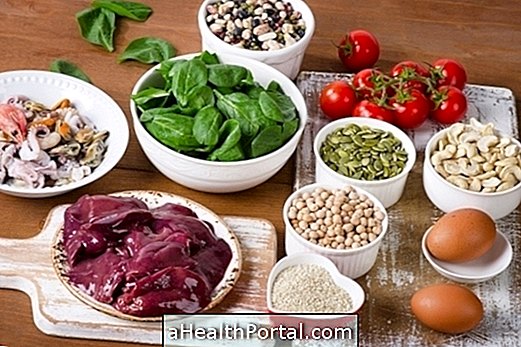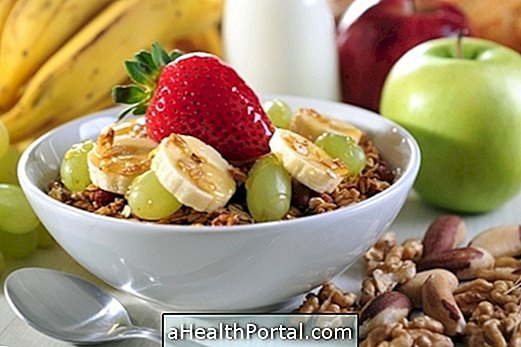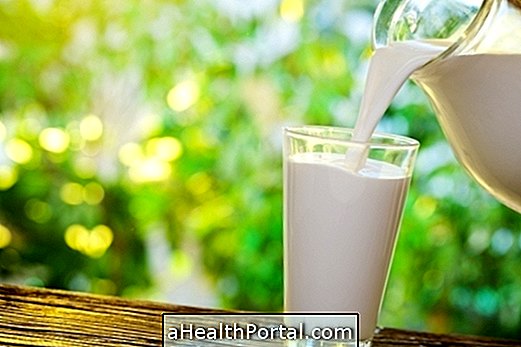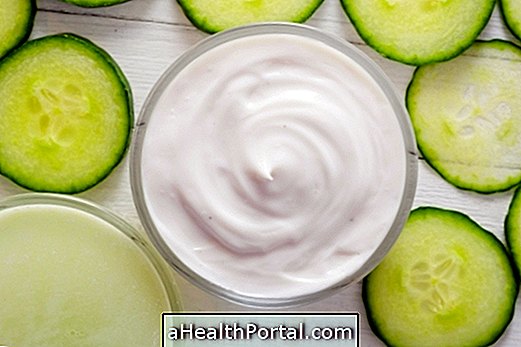The diet for gestational diabetes is similar to the diet for common diabetes, and it is necessary to avoid foods containing sugar and white flour, such as sweets, breads, cakes, salads and pasta.
However, women with gestational diabetes need to take extra care because increased blood sugar can impair the development of the fetus and bring complications such as preterm delivery, preeclampsia and heart disease in the baby.

What to eat
The pregnant woman should choose foods low in carbohydrates or that contain complex carbohydrates, which are called whole foods. See the complete list below:
- Whole grains: brown rice, whole wheat bread, quinoa, oats, lentils, chickpeas, beans, peas and corn;
- Fruits and vegetables ;
- Meat in general, preferably low in fat;
- Fish fresh and canned in olive oil, such as sardines and tuna;
- Oilseeds: nuts, peanuts, walnuts, hazelnuts and almonds;
- Milk and dairy products: whole milk, whole-grain yogurt, cheeses;
- Natural fats: butter, olive oil, coconut oil, coconut, avocado;
- Seeds : chia, flaxseed, sesame, pumpkin, sunflower.
It is important to remember that even whole foods, fruits, sweet potatoes and sweet potatoes are also high in carbohydrates and should be consumed in moderation. Get to know all the foods rich in carbohydrates.
What to eat less often

Some low-carbohydrate, low-carbohydrate foods should be eaten less frequently and in moderate amounts, such as white rice, sweet potatoes, potatoes, yams, cassava, tapioca, couscous and water and salt biscuits.
In addition, moderation should also be exercised in the consumption of natural juices, dehydrated fruits and whole grains, as it may increase glycemia. You also have to be careful with some types of granola, since most of them contain a lot of sugar, dehydrated fruits and cane molasses in their composition.
What Not to Eat
Foods that should be avoided in the diet for gestational diabetes are those with sugar and white flour in its composition, such as cakes, ice creams, pastries, pizzas, pies and white breads. In addition, it is also important to avoid foods that contain corn starch, also known as cornstarch, and additives such as molasses, corn syrup and glucose syrup, which are sugar-like products.
Also avoided processed meats like sausage, sausage, ham and mortadella, and beverages containing sugar, such as coffees, soft drinks, processed juices and teas with added sugar.
When to measure blood glucose

During gestational diabetes, blood glucose should be measured according to the request of the endocrinologist accompanying the problem. In general, fasting blood glucose should be measured on waking up and after main meals, such as lunch and dinner.
When gestational diabetes is well controlled, the doctor may ask that blood glucose be measured only on alternate days, but when diabetes is too high, he may recommend checking for more times throughout the day.
Diet Menu for Gestational Diabetes
The following table provides an example of a 3-day menu for gestational diabetes control:
| Meal | Day 1 | Day 2 | Day 3 |
| Breakfast | 1 glass of milk + 2 slices whole wheat bread with cheese, egg and 1 teaspoon of sesame | 1 cup sugar-free coffee + 1 roasted banana + 2 slices cheese with oregano | 1 whole natural yogurt whipped with 3 prunes + 1 slice of bread with egg and cheese |
| Morning snack | 1 banana + 10 cashew nuts | 2 slices of papaya + 1 tablespoon of oatmeal | 1 glass of green juice with cabbage, lemon, pineapple and coconut water |
| Lunch dinner | 1 baked potato in the oven + 1/2 salmon steak + green salad with olive oil + 1 dessert orange | whole-wheat pasta with vegetables in tomato sauce + steamed salad in olive oil + 2 slices of melon | 4 tablespoons brown rice + 2 tablespoons beans + 120 g pan roasted + salad with vinegar and olive oil |
| Afternoon snack | 1 glass of orange juice + 3 whole-grain toast with cheese | 1 cup of coffee + 1 slice of whole cake + 10 peanuts | 1 cup of coffee with milk + 1 small tapioca with cheese and butter |
The diet for gestational diabetes should be individualized, according to the pregnant women's blood glucose levels and their dietary preferences, and should be prescribed and monitored by a nutritionist.
Watch the following video and see tips from our nutritionist to ensure proper nutrition in case of gestational diabetes:





















